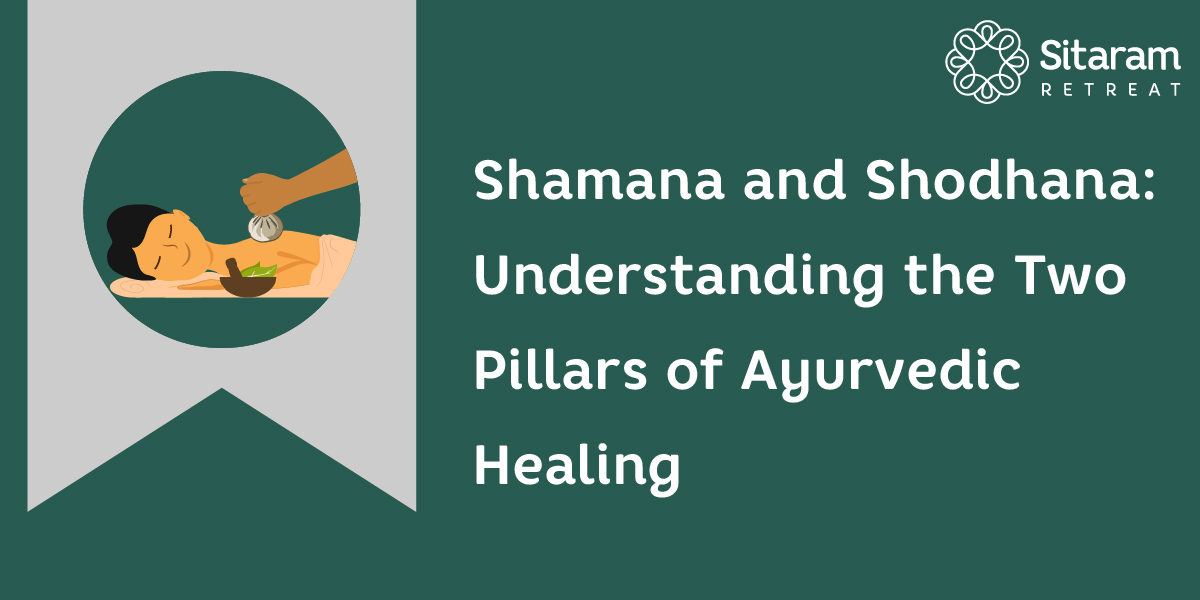Ayurveda and Yoga for Respiratory Health
By Vignesh Devraj

Respiratory health has been widely documented in traditional systems. However, it is only recently that we have become more aware of its importance in our general health and well-being. We live in an era where global warming, erratic climatic variations, poor air quality, excessive exposure to smoke, and fungal, viral, and bacterial infections have become the new regular, contributing to many of us losing our respiratory health. As a result, we are more conscious than ever before of the threat of this spreading.
The greatest thing for us to do during the current pandemic, with most of its workings still unknown, is to get back to our foundations. Ayurvedic medicine and its sister science, Yoga, date back over 5000 years and propose particular herbal therapies and daily therapeutic procedures to prevent numerous oral and nasal disorders and maintain overall respiratory health. Prana is the vital energy or life force present in all living beings and present in the whole body. Prana is linked to the heart and respiratory organs and the muscles and nerves that control them.
Ayurveda believes that clear breathing is essential for the healthy flow of ‘prana.’ Simple practices from Ayurveda can be incorporated into our ‘Dinacharya,’ or daily existence. For example, cleaning your nasal passages and sinuses with a saline nasal spray or a neti pot moistens the nose while removing dust, debris, and pollen. Apply nasal oil or ghee (clarified butter) to lubricate the nasal passages, soothe and cleanse tissues, and wipe up excess mucous from the sinuses.
Ayurvedic medicine benefits respiratory conditions
Yashtimadhu: The typical sore throat is perhaps the most inconvenient respiratory condition. One teaspoon of liquorice root or powder, made as tea and sipped 2-3 times per day, calms the sore throat while providing significant relief to the fragile lung lining.
Pippali: A member of the peppercorn family, helps clear mucus and congestion. Boiling ten peppercorns in milk is the best method to consume this. Crushed pepper with honey is also an excellent remedy for throat issues.
Triphala: An Ayurvedic blend of Amalaki, Haritaki, and Bibhitaki, it is a potent herbal decoction for gargling. According to Ayurveda, gargling should be done daily to balance the doshas in the throat.
Amla: Vitamin C should be included in your everyday diet. The Indian gooseberry is a natural source of bioflavonoids and antioxidants.
Haridra: Curcumin helps to maintain a healthy respiratory system by inhibiting the production of pro-inflammatory molecules (cytokines).
Nasya helps in treating respiratory problems. The treatments help in nasal congestion, allergies, sinusitis, headaches, migraine, rhinitis and other nasal infections.
Yoga and its benefits to the respiratory system
The focus of Yoga has always been on Prana and respiratory wellness. Hatha Yoga, a combination of Asanas (physical postures) and Pranayama (Yogic breathing exercises), is an ancient Indian practice that brings a sense of balance to the body, mind, and spirit and is essential for the smooth functioning of the respiratory system. Asanas gently move the spine in all directions, stretching and strengthening the upper torso’s respiratory muscles.
- Phalankasana (plank), side planks, and upward plank postures, which develop the muscles surrounding the chest wall, are some of the most beneficial yoga Asanas for this.
- Backbends like Bhujangasana (cobra pose) and Urdva Mukha Svanasana (upward-facing dog pose) strengthen the back and chest muscles. To ensure optimum performance of the airways, these Asanas tone and stimulate the cartilages of the respiratory tract, increase blood circulation through the pulmonary veins and capillaries, increase the efficient functioning of the lungs, and maintain balance in the sympathetic and parasympathetic nerves.
- The Surya Namaskar, which consists of 12 physical postures interspersed with systemic inhaling and exhalation, has a profound effect on the body’s trillions of cells.
Types of Pranayama and benefits
Pranayama combines Prana, which means life force, Yama, which means discipline or control; and Ayama, which means extension or expansion. Different types of Pranayama include Nadi shodhana, Anuloma-viloma, Ujjayi, Surya Bhedana, Tribandha, etc.
Pranayama (Yogic breathing exercises) can boost oxygen intake five times, allowing the lungs, heart, brain, and digestive organs to work optimally and improve general health. Pranayama increases blood flow to all parts of the body, increases lung fluid circulation, which stimulates lymphatic flow and eliminates toxins, improves the elasticity of the ribs and intercostal muscles, which help form and move the chest wall, and increases the movement of the diaphragm, which massages abdominal organs for better digestion.
Health benefits of Yoga
- Yoga improves strength, flexibility, and balance in the body
- Relieves pain in the body
- Benefits respiratory and cardiac health
- Relaxes and helps you sleep well
- Boost energy and brighten the mood
- Manages stress and anxiety


 retreat@sitaramayurveda.com
retreat@sitaramayurveda.com +91 813 8888 912
+91 813 8888 912





